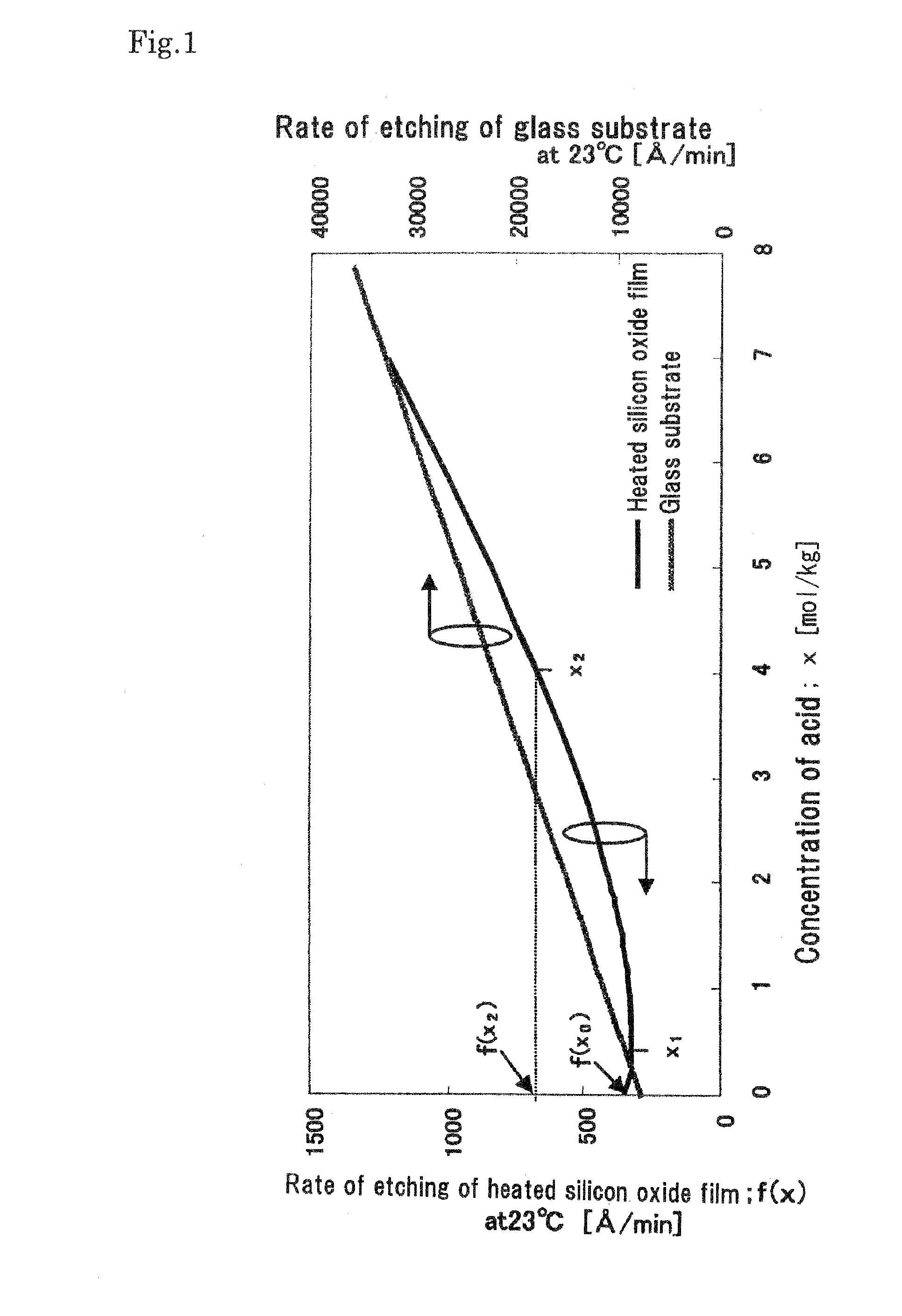Method for treating surface of a glass substrate
a glass substrate and surface treatment technology, applied in the field of surface treatment solutions, can solve the problems of affecting the uniformity of etching/cleaning, affecting the etching rate and amount of etching, and limiting the mechanical thinning of the mother glass plate, so as to prevent the occurrence/development of surface roughness
- Summary
- Abstract
- Description
- Claims
- Application Information
AI Technical Summary
Benefits of technology
Problems solved by technology
Method used
Image
Examples
examples
[0063]The method of the invention will be described below more specifically by means of examples. However, the present invention is not limited to those examples.
[0064]First, as a fundamental experiment, hydrochloric acid (HCl) added HF-based etching solutions were prepared with the concentration of HCl being varied. The compositions of the etching solutions and their features are summarized in Table 1 below.
TABLE 1Rate of etchingof heated siliconRate of etchingoxide filmof glass substrateHFHCl(at 23° C.)(at 23° C.)(mol / kg)(mol / kg)(Å / min)(Å / min)Features1010824000.259626000.5932900Rate of etching of heatedoxide film minimum0.759532001973500211645004182670052297800630389003032877000.2532285000.53219500Rate of etching of heatedoxide film minimum0.7532210400133811300240414900464122100610042920050595128000.25596146000.5606166000.756231850016452050027812820041278436006192859100
[0065]The glass substrate used in the experiment included glass substrates to be incorporated in liquid crystal (...
PUM
| Property | Measurement | Unit |
|---|---|---|
| dissociation constant | aaaaa | aaaaa |
| thickness | aaaaa | aaaaa |
| concentration | aaaaa | aaaaa |
Abstract
Description
Claims
Application Information
 Login to View More
Login to View More - R&D
- Intellectual Property
- Life Sciences
- Materials
- Tech Scout
- Unparalleled Data Quality
- Higher Quality Content
- 60% Fewer Hallucinations
Browse by: Latest US Patents, China's latest patents, Technical Efficacy Thesaurus, Application Domain, Technology Topic, Popular Technical Reports.
© 2025 PatSnap. All rights reserved.Legal|Privacy policy|Modern Slavery Act Transparency Statement|Sitemap|About US| Contact US: help@patsnap.com



